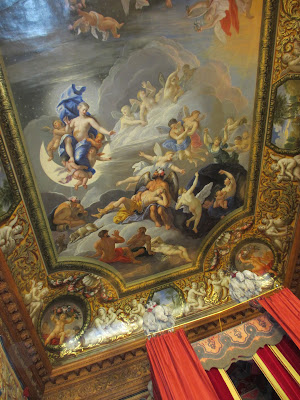By the time Henry finished his building works at Hampton Court Palace in about 1540, the palace was one of the most modern, sophisticated and magnificent in England.
There were tennis courts, bowling alleys and pleasure gardens for recreation, a hunting park of more than 1,100 acres, kitchens covering 36,000 square feet, a fine chapel, a vast communal dining room (the Great Hall) and a multiple garderobe (or lavatory) - known as the Great House of Easement - which could sit 28 people at a time. Water flowed to the palace from Coombe Hill in Kingston, three miles away, through lead pipes.
All of Henry’s six wives came to the palace and most had new and lavish lodgings. The King rebuilt his own rooms at least half a dozen times. Note the elaborately carved wood detail above.
The palace also provided accommodation for each of the King's children and for a large number of courtiers, visitors and servants.
And he used Hampton Court to impress. Most famously in August 1546 Henry feasted and fêted the French ambassador and his entourage of two hundred gentlemen – as well as 1,300 members of his own court – for six days. An encampment of gold and velvet tents surrounded the palace for the occasion.
A year later, Henry was dead, with three surviving children – the 9-year
old Prince Edward and his older sisters Mary and Elizabeth. Each would
rule England, and Hampton Court would continue to play an important part
in the lives of the Tudor monarchs.
























No comments:
Post a Comment